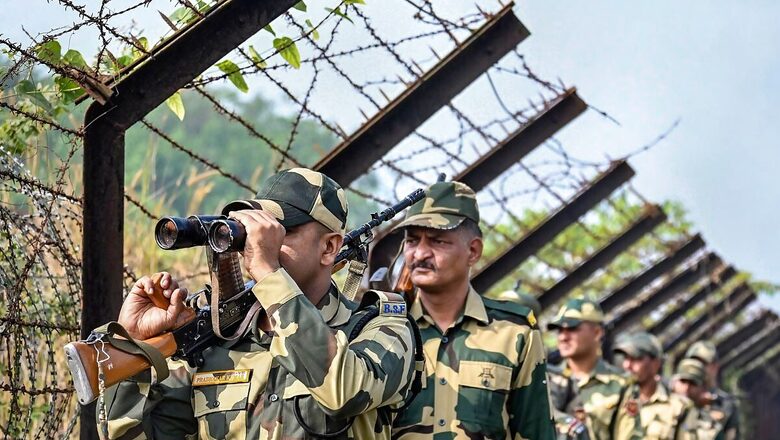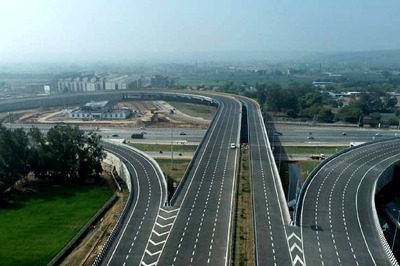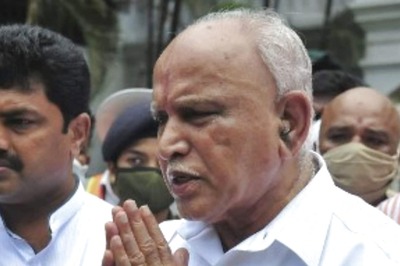
views
There are many naysayers who are of the vehemence that the fencing of the entire 1643 km India-Myanmar border is not a good idea. Such personages — and they unfortunately include people such as a former Indian envoy to Myanmar — cite aspects ranging from the virtual end of the Free Movement Regime (FMR) which permits people living along the border on either side to travel 16 km into each other’s country, without visa, for primarily trade to the human aspect pertaining to the demographic contiguity, that characterises both India and Myanmar in the borderlands. But if a dispassionate cost-benefit analysis of Union Home Minister Amit Shah’s decision to fence the border is undertaken, then the pros will outnumber the cons.
The ongoing turmoil in Manipur is a direct result of the open border with Myanmar. As I have written earlier in these columns, the Valley-Based-Insurgent Groups (VBIGs), including the United National Liberation Front (Koirang), the People’s Liberation Front (Manipur), the People’s Revolutionary Party of Kangleipak, the Kangleipak Communist Party and the Kanglei Yawol Kanna Lup (collectively known as the Group of Five (G-5), which is the new avatar of the Coordination Committee (CorCom) after the return of the United National Liberation Front (Pamei) to the mainstream, are billeted in three neat clusters in Myanmar’s Sagaing Division.
After the military takeover of February 1, 2021, the above underground groups came to an understanding with the Myanmar Army (MA). The VBIGs will no longer be touched, harassed or ousted from their safe havens in what has come to be known as the Northern, Central and Southern clusters in Sagaing Division. In return, the VBIGs would have to aid the MA to quell the civil unrest that erupted after the coup d’etat. The development not only led to an end to the modicum of military cooperation that had been witnessed in the years preceding the military takeover by way of Operations Sunrise-I and Sunrise-II, which demolished several India Insurgent Groups’ (IIGs) camps in and around Taga (a hunting ground for IIGs just West of the Chindwin river), but the unprecedented situation in Manipur saw hordes of VBIG cadres entering Manipur to battle the Kukis and the security forces. The fact that the porous border also facilitated illegal migration, drugs and arms smuggling from Myanmar by social formations that had affiliations with people in Manipur and have begun to occupy forest lands in the state seems to be borne out by a plethora of facts.
Also, several thousand anti-Junta rebels have fled to India since the February 1, 2021 military coup in Myanmar. Of late, even MA personnel had begun to enter Mizoram in a bid to escape the pursuing People’s Defence Force (the National Unity Government’s armed wing) and various ethnic militias. It is in this backdrop that I wish to examine the issue of the India-Myanmar border fence.
At the very outset, it must be understood that fences are not walls. They are created to manage legal, regulated movement.
I was an international visitor to the United States at the invitation of the US Department of State in 2003. One of the tours took 25 other law enforcers and conflict theorists from around the world as well to many places in the US including the US-Mexico border in San Diego. The manner in which the completely (and concretely, not merely fenced) sealed border is run has to be seen to be believed. We watched as US law enforcers carefully checked the credentials of Mexicans entering the US territory for a day’s work. They would return after work after paying their taxes to US treasuries and naturally stringent rules governing such entry and exit ensured that they had no political rights in the US.
We also witnessed American K-9 dogs waylaying a car entering from Mexico. The driver, we later learnt, was attempting to ferry drugs into the US. Detailed briefings, a tour of the detention centres where Mexicans who were caught trying to enter the US illegally and the formidable wall which led into the Pacific brought back a recall of my own.
In an article I had written way back in the North East Sun (Delhi) in its 20-26 May 1995 issue, I had worked out a blueprint for a work permit idea. In San Diego, eight years later, I felt smug about the idea of a work permit for Bangladeshis illegally entering Assam. The fact that it was almost on similar lines with what I witnessed at the US-Mexican border, convinced me that my theory, if it were to be tried and tested, could work for Assam and the rest of the Northeast as well. After all, in 1995, when I first seriously thought of the problem of illegal migration into Assam from Bangladesh, the issue was taking ominous portents and shapes. Indeed, the problem has not left us until today.
But today, I hail the Modi government’s commitment to construct impenetrable borders. Amit Shah’s decision to build a fence along the entire 1643-kilometre-long India-Myanmar border is bold. It will facilitate better surveillance and prevent illegal migration and ingress of VBIGs. Furthermore, the fencing of the border has nothing to do with the “Neighbourhood First” policy. I have been critical of the policy for a number of reasons, but fencing the India-Myanmar border is not one of them.
Indeed, even if the Free Movement Regime (FMR) has to be jettisoned, then so be it. I, for the life of me, cannot think of one reason which characterised it as a great idea, even when it came into being in 2018. If the FMR was anvilled to keep border trade alive then there are several mechanisms to ensure its continuance including the Border Haat system that is in place at the India-Bangladesh border.
I had been to Mon not too many months ago. Although I could not make it to Longwa (Oting held greater interest for the student of security in me), the Konyak chieftain’s village where the ‘Angh’ (King/Chieftain) sleeps in India and eats in Myanmar is an interest for many. But the fact of the matter is that these are fables for travelogues and tourist brochures. The Assam Rifles, which guard the border with great tenacity and for which it is now being lampooned in Valley Manipur, too, would testify to the fact that although all borders are in the final analyses imaginary, walls make better neighbours. Even beasts mark their territory and would not countenance trespass. On the India-Myanmar border, it is trespass, transgression and temerity.
If one is pointing fingers at the decision to fence the India-Myanmar border stating that it would sound the death knell to people-to-people contact between the two countries, then it must be stated that the FMR has not achieved that by any standard or measure. If anything, it has only facilitated the unfettered movement of insurgents, drug peddlers and gun runners. It is surprising that knowledgeable people who are aware of Indian Insurgent camps just across the border (for instance in Somra Tracts of the Sagaing Division) should be criticising Amit Shah’s decision to fence the India-Myanmar border. Even a fool knows that a Naga of Myanmar who has a social affiliation with a Naga of India has no interest in Bodh Gaya, the pilgrimage circuit of which would continue, fence or no fence.
Also, the contiguity which characterises, for instance, the Naga people (if the broad social formation can be termed as “Naga people”) is not limited to just 16 km that the FMR has permitted, but can actually go all the way to Taga, a place which is inhabited by Rangpang Nagas. The distance from Longwa in Nagaland’s Mon district to the Chindwin Valley in Myanmar where Taga is located took the famed traveller and Myanmar expert, Bertil Lintner, two weeks to traverse. I emailed him to procure this piece of information. I also looked up Google Earth and found that it would take 39 hours of driving or 1,349 km on the Asian Highway 1 to get from Longwa to Chindwin. Sceptics of Amit Shah’s decision to fence the India-Myanmar border must get both their geography and demography right before they make irrational protests against sound judgement.
Harsh times necessitate intrepid calls. The situation in Manipur, Myanmar and Mizoram intertwined as they are with a curious mix of black, white and grey calls for courageous decisions. Manipur of the present is not presenting itself to any easy solution. It is also a known fact that much of the subterfuges in the “Land of the Sangai” are a result of the sinister and motivated entry of the VBIGs into the state from Myanmar’s Sagaing Division. Satellite images that have been made available to me by certain central agencies have also indicated that forest lands in Manipur have been taken over by human movement from across Myanmar.
While analyses, at least by me, cannot decisively put a finger on the issue and pass judgement about whether it is one social formation or the other that is responsible for forest cover depletion in Manipur, laying logic and demographic growth pattern studies seem to showcase that migration from across Myanmar could be a plausible explanation. It would also be unfair to state that “the Centre has fallen hostage to a narrative of the Manipur government”. I went to Manipur in early October 2023. I visited Imphal and Churachandpur. Yes, the ethnic divide is complete, but it is also true that May 3, 2023, was just a trigger. There has always been a divide. It was just being tolerated.
If I have recently written critically about radical Meitei groups such as Arombai Tenggol, then I must in the same breath state that there has been illegal ingress of the Kukis and affiliated tribes from Myanmar. It is also the case that the Kukis of Imphal were the most affluent community. While I cannot hold my hand to my heart to wager whether drug money was at the heart of the matter, there is certainly much substance that the product of poppy cultivation in Myanmar was entering Manipur and the Northeast with impunity.
India’s national security is paramount. As a theoretician and student of conflict, I have been unsparing in the past for what I have termed as the Indian state’s ineptitude handling of the Northeast. But today, I join my hands both to laud and praise the farsightedness with which Amit Shah has decided to fence the India-Myanmar border.
Jaideep Saikia is a Conflict Theorist and Bestselling Author. Views expressed in the above piece are personal and solely that of the author. They do not necessarily reflect News18’s views.




















Comments
0 comment